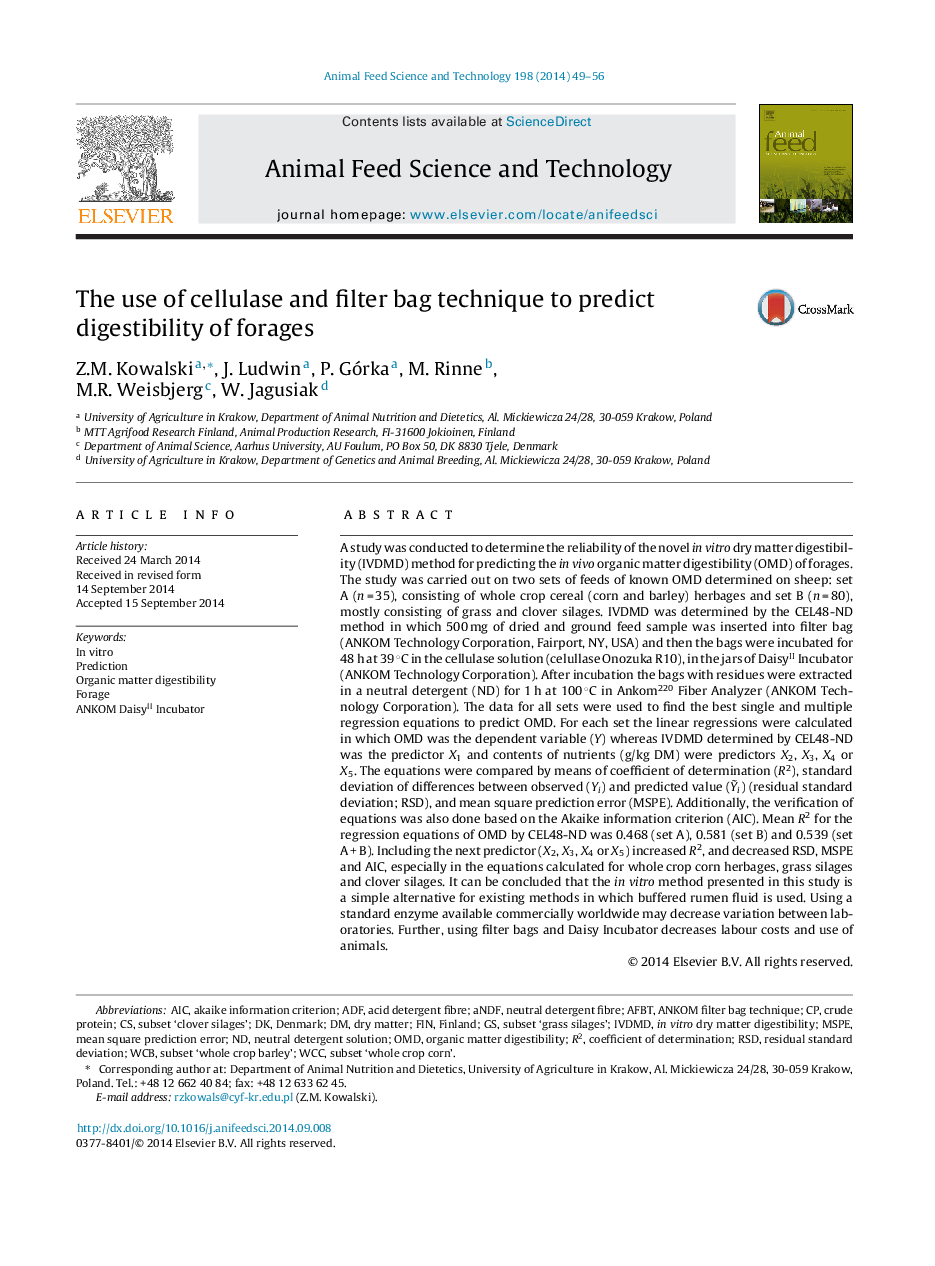| Article ID | Journal | Published Year | Pages | File Type |
|---|---|---|---|---|
| 8491463 | Animal Feed Science and Technology | 2014 | 8 Pages |
Abstract
A study was conducted to determine the reliability of the novel in vitro dry matter digestibility (IVDMD) method for predicting the in vivo organic matter digestibility (OMD) of forages. The study was carried out on two sets of feeds of known OMD determined on sheep: set A (n = 35), consisting of whole crop cereal (corn and barley) herbages and set B (n = 80), mostly consisting of grass and clover silages. IVDMD was determined by the CEL48-ND method in which 500 mg of dried and ground feed sample was inserted into filter bag (ANKOM Technology Corporation, Fairport, NY, USA) and then the bags were incubated for 48 h at 39 °C in the cellulase solution (celullase Onozuka R10), in the jars of DaisyII Incubator (ANKOM Technology Corporation). After incubation the bags with residues were extracted in a neutral detergent (ND) for 1 h at 100 °C in Ankom220 Fiber Analyzer (ANKOM Technology Corporation). The data for all sets were used to find the best single and multiple regression equations to predict OMD. For each set the linear regressions were calculated in which OMD was the dependent variable (Y) whereas IVDMD determined by CEL48-ND was the predictor X1 and contents of nutrients (g/kg DM) were predictors X2, X3, X4 or X5. The equations were compared by means of coefficient of determination (R2), standard deviation of differences between observed (Yi) and predicted value (Ỹi) (residual standard deviation; RSD), and mean square prediction error (MSPE). Additionally, the verification of equations was also done based on the Akaike information criterion (AIC). Mean R2 for the regression equations of OMD by CEL48-ND was 0.468 (set A), 0.581 (set B) and 0.539 (set A + B). Including the next predictor (X2, X3, X4 or X5) increased R2, and decreased RSD, MSPE and AIC, especially in the equations calculated for whole crop corn herbages, grass silages and clover silages. It can be concluded that the in vitro method presented in this study is a simple alternative for existing methods in which buffered rumen fluid is used. Using a standard enzyme available commercially worldwide may decrease variation between laboratories. Further, using filter bags and Daisy Incubator decreases labour costs and use of animals.
Keywords
IVDMDaNDFRSDOMDMSPEWCBAICWCCADFacid detergent fibreResidual standard deviationDenmarkIn vitrocoefficient of determinationForageFinlandneutral detergent fibredry matterAkaike information criterionmean square prediction errorOrganic matter digestibilityIn vitro dry matter digestibilityfincrude proteinPrediction
Related Topics
Life Sciences
Agricultural and Biological Sciences
Animal Science and Zoology
Authors
Z.M. Kowalski, J. Ludwin, P. Górka, M. Rinne, M.R. Weisbjerg, W. Jagusiak,
